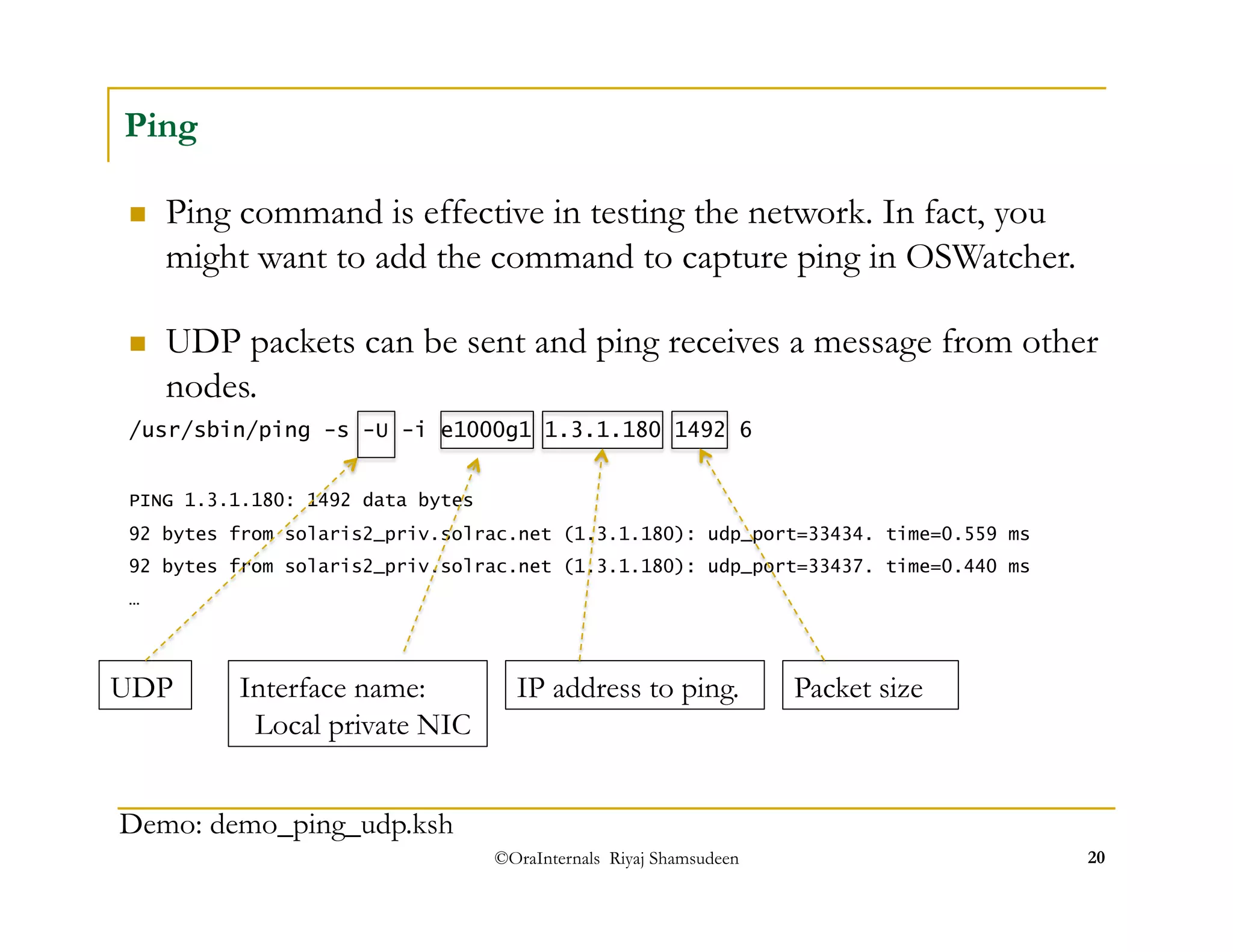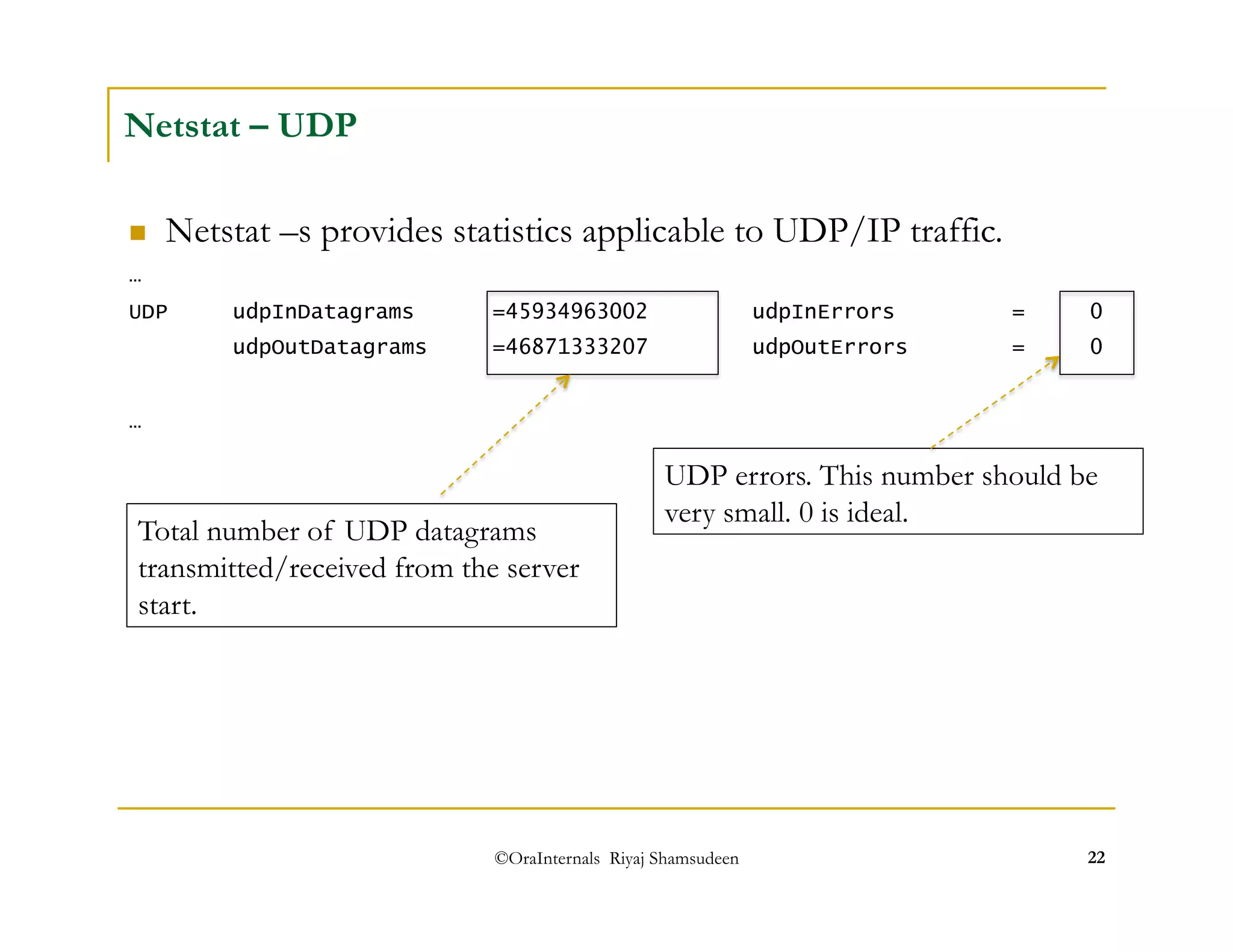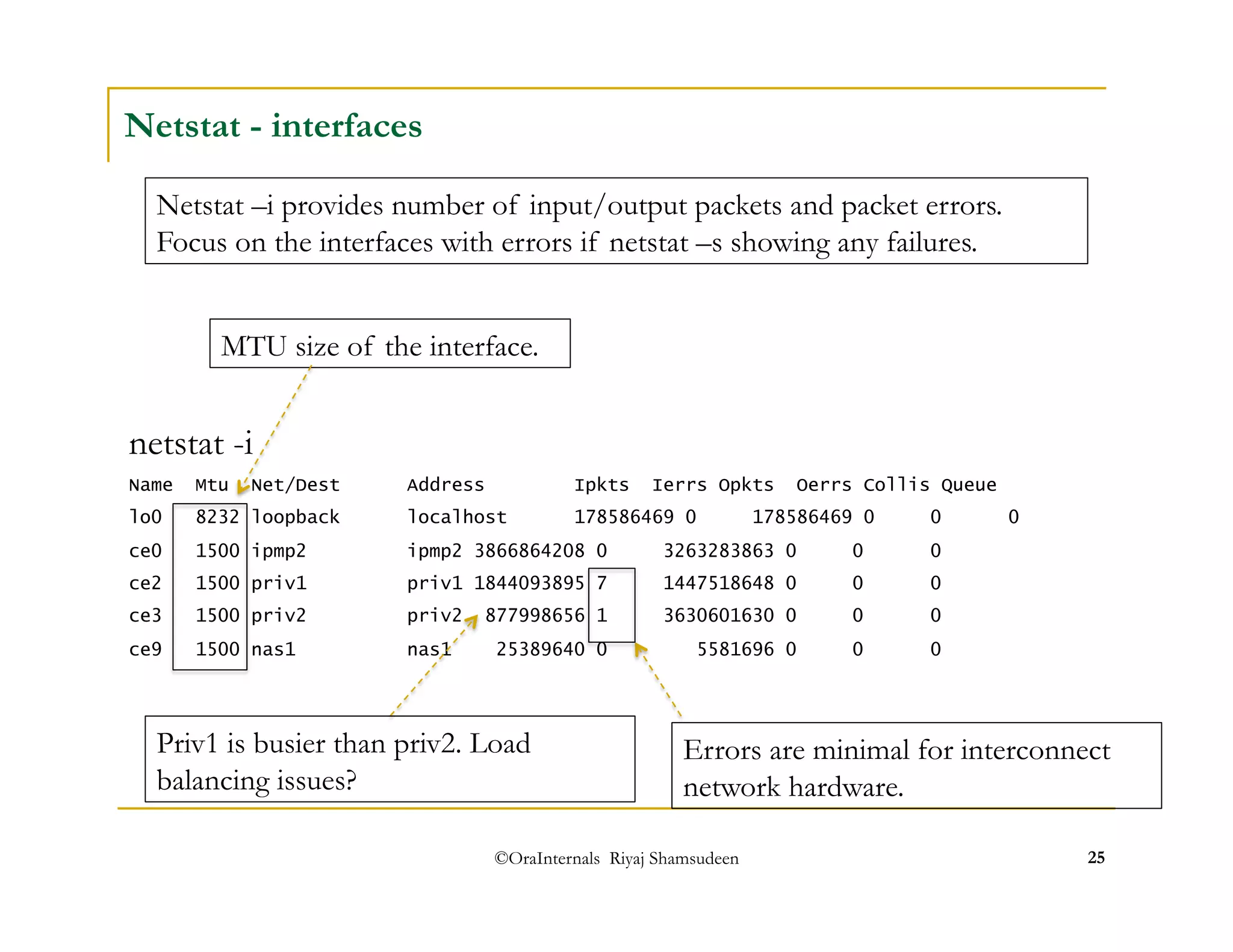This document discusses network considerations for Real Application Clusters (RAC). It describes the different network types used, including public, private, storage, and backup networks. It discusses protocols like TCP and UDP used for different traffic. It also covers concepts like network architecture, layers, MTU, jumbo frames, and tools for monitoring network performance like netstat, ping, and traceroute.
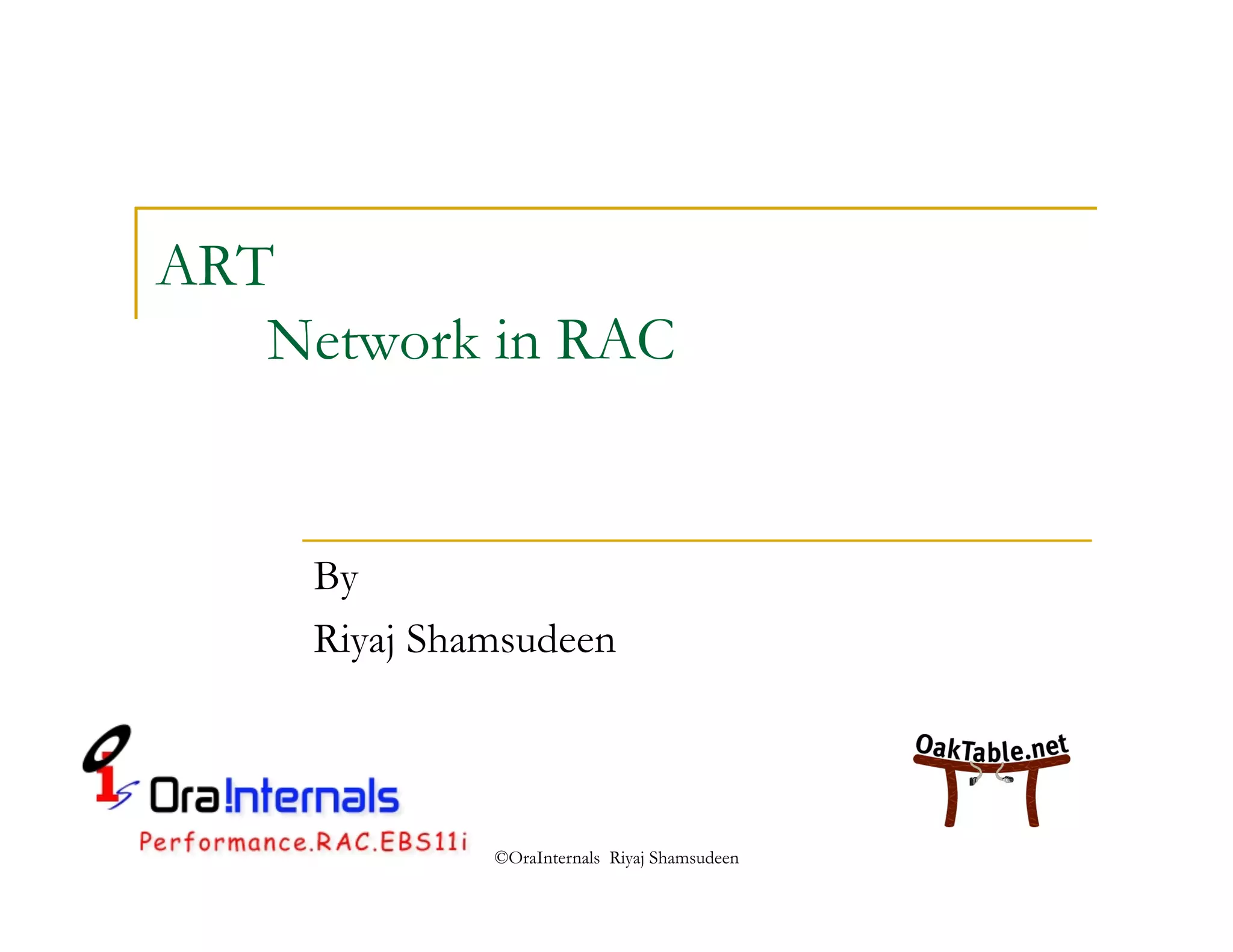

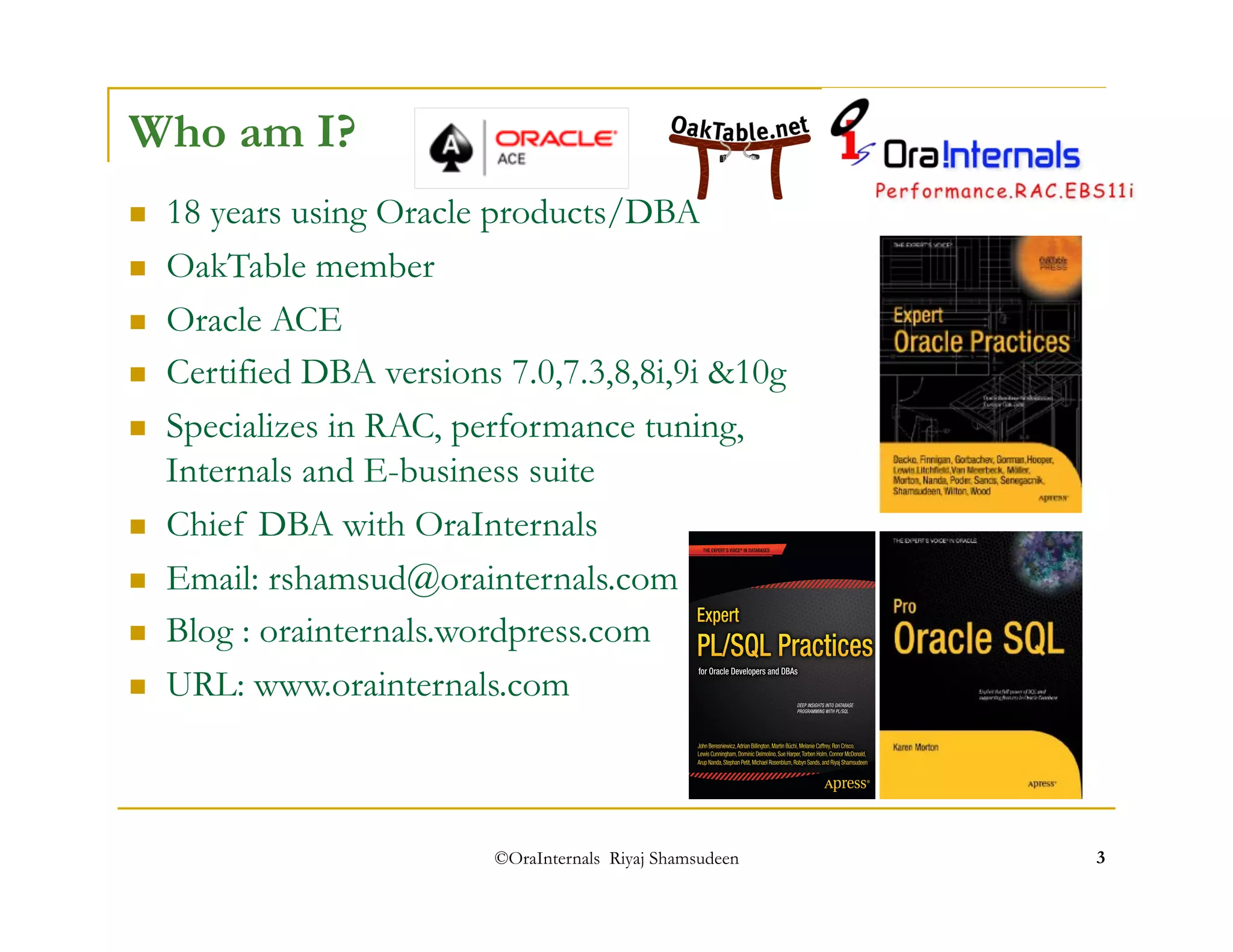
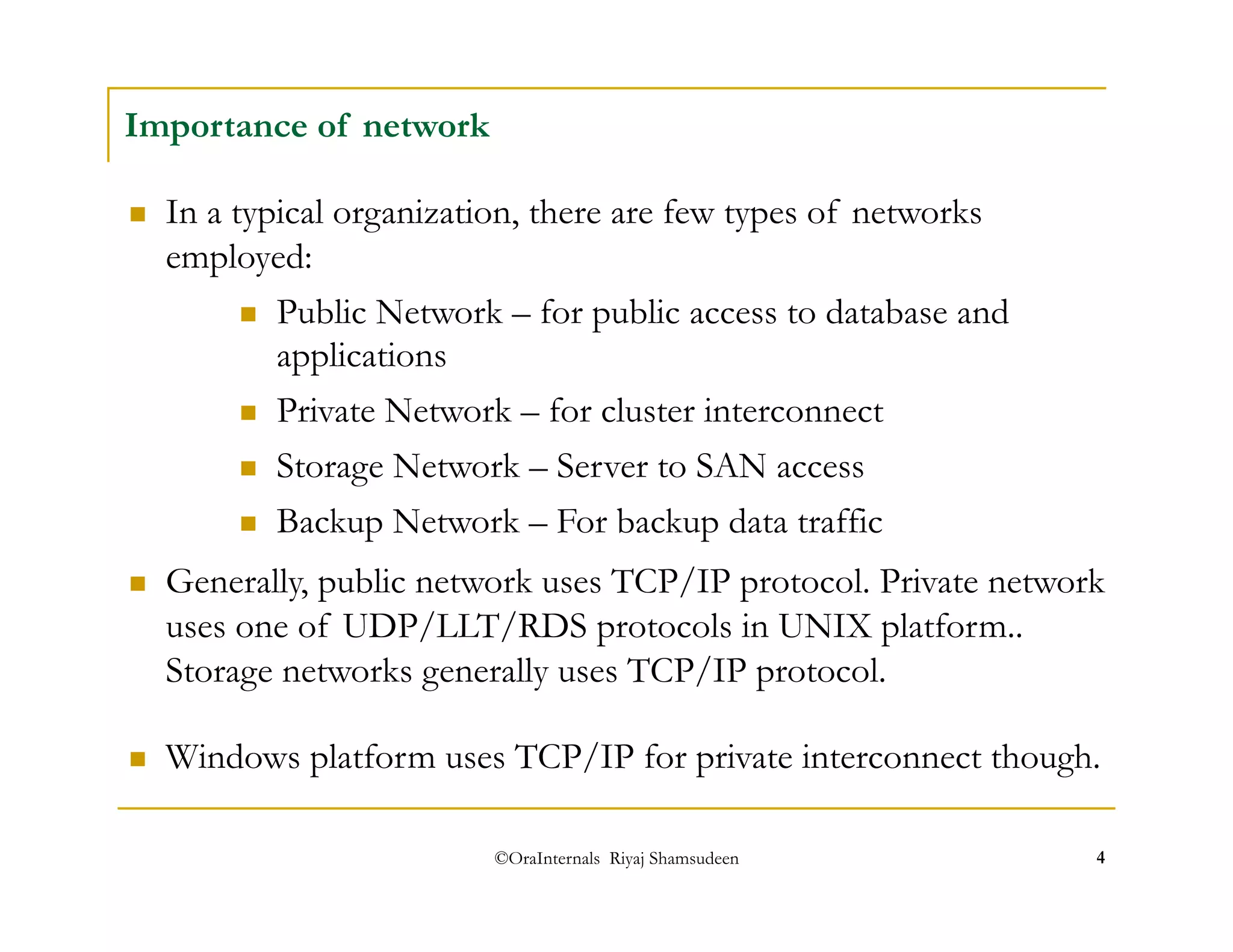
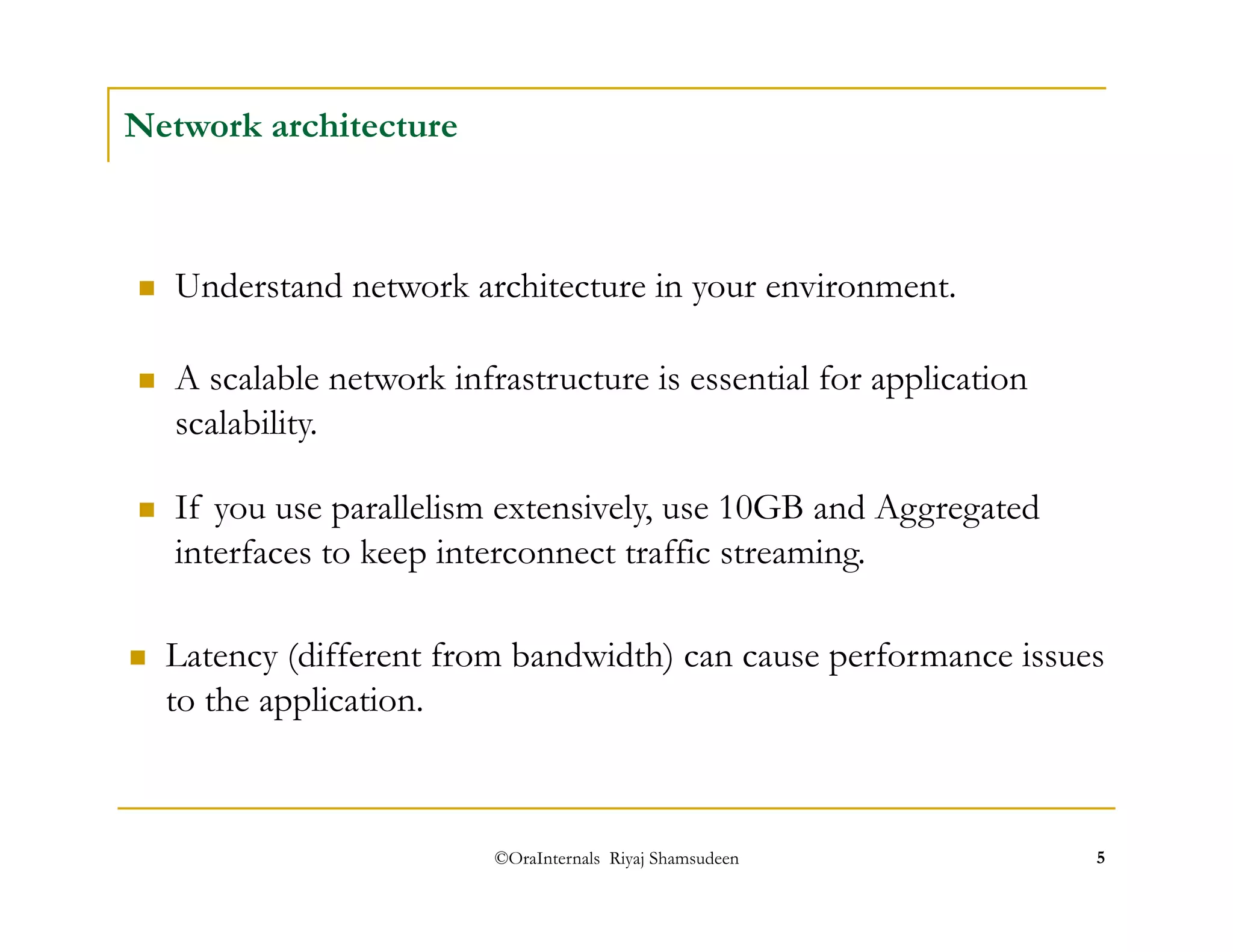
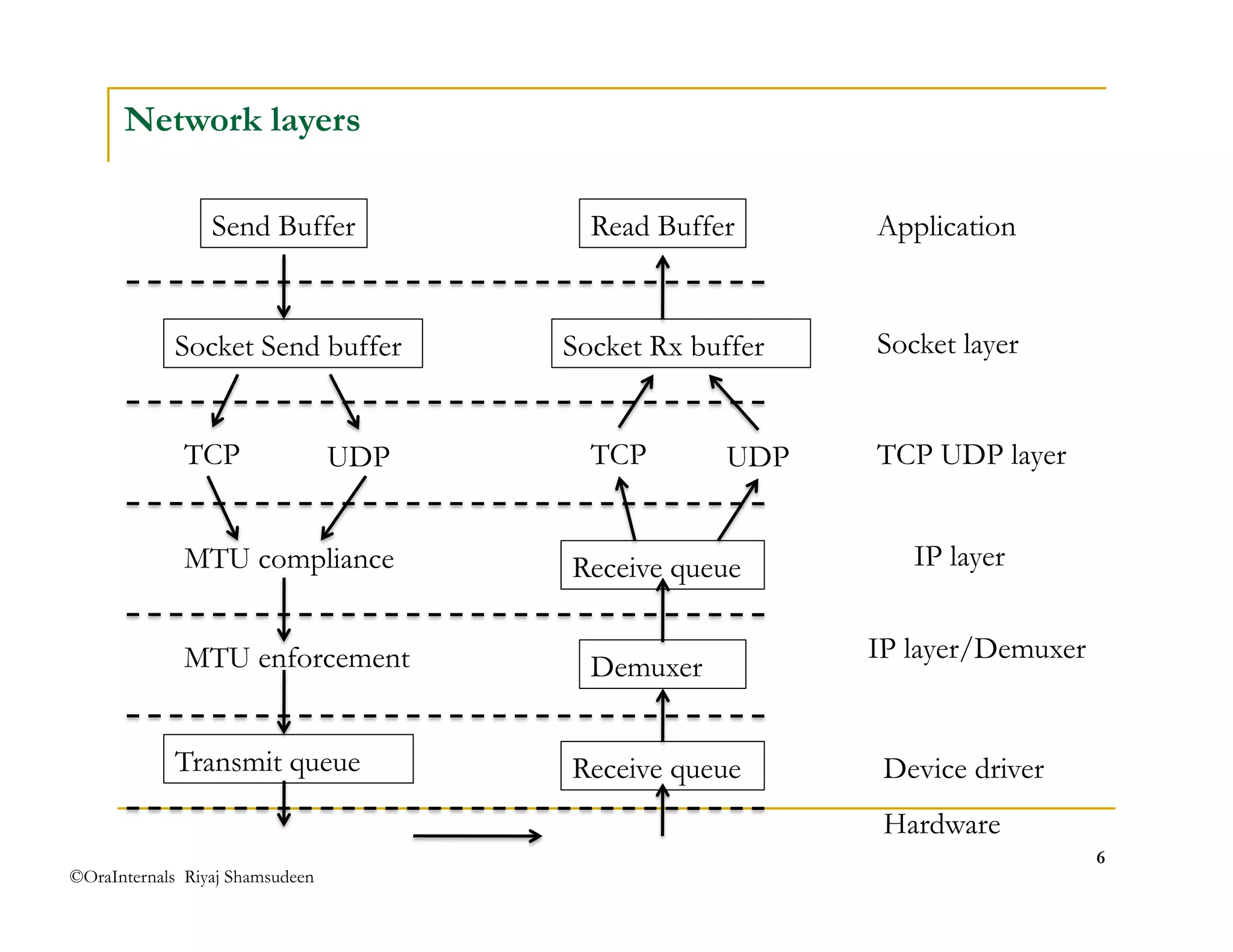
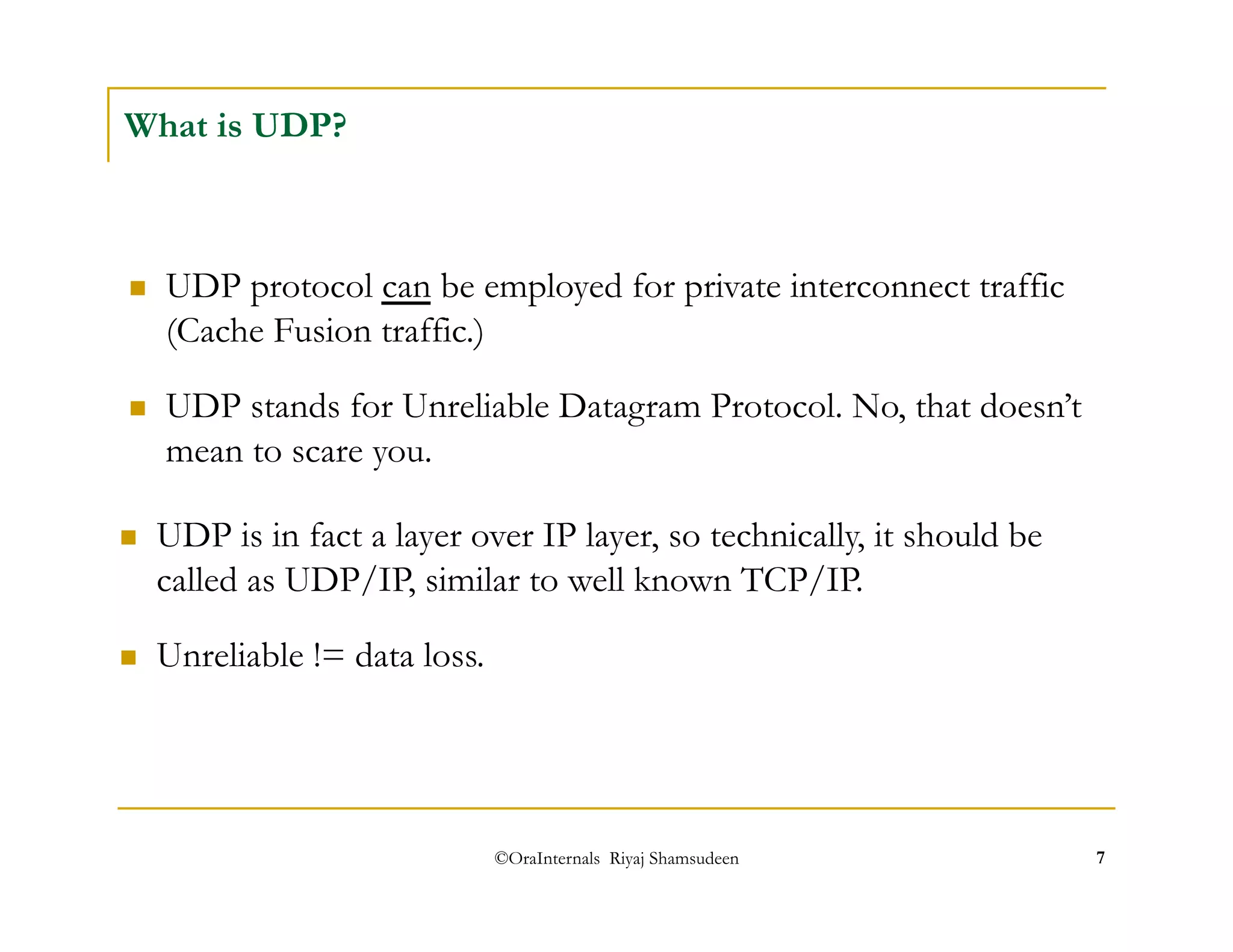


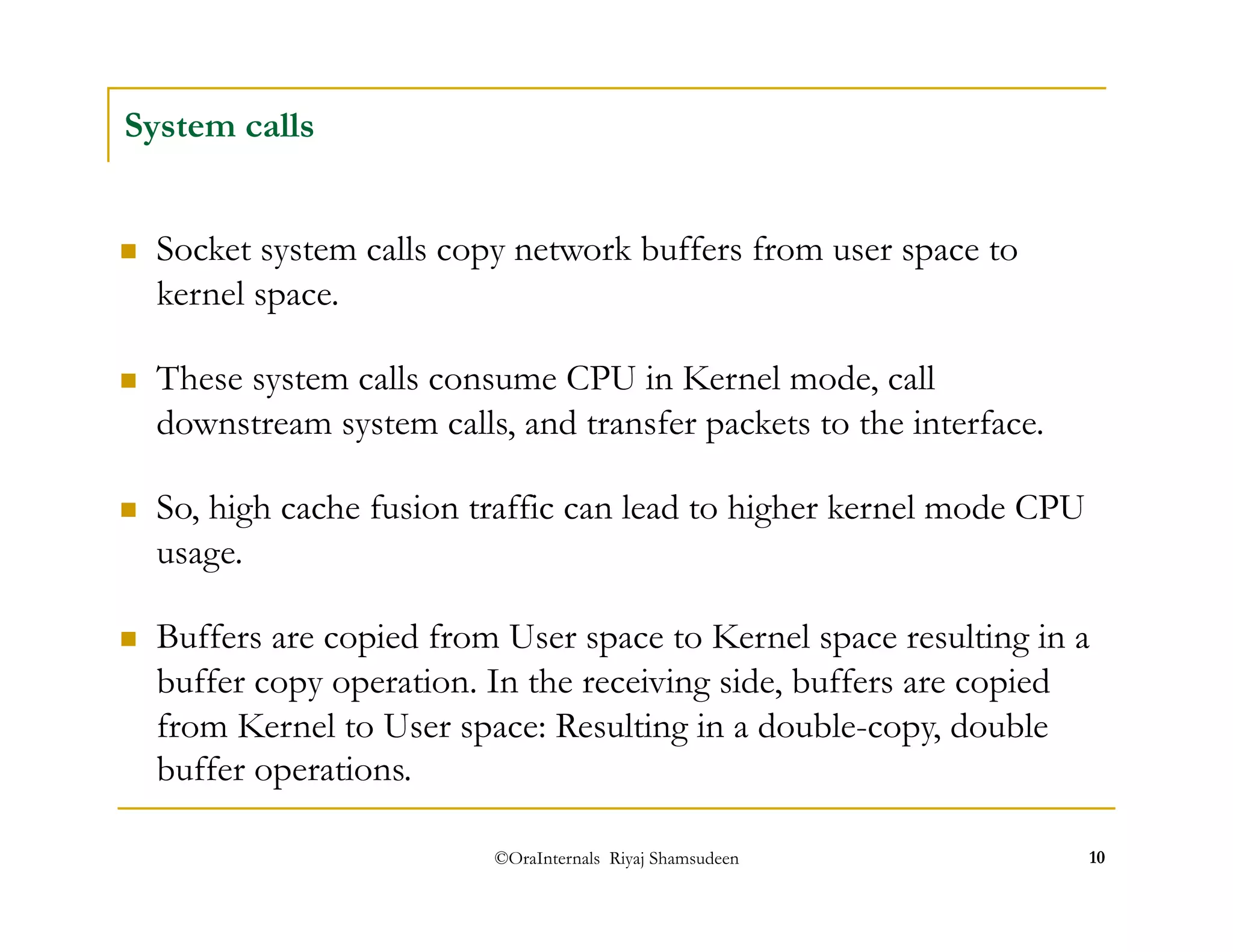






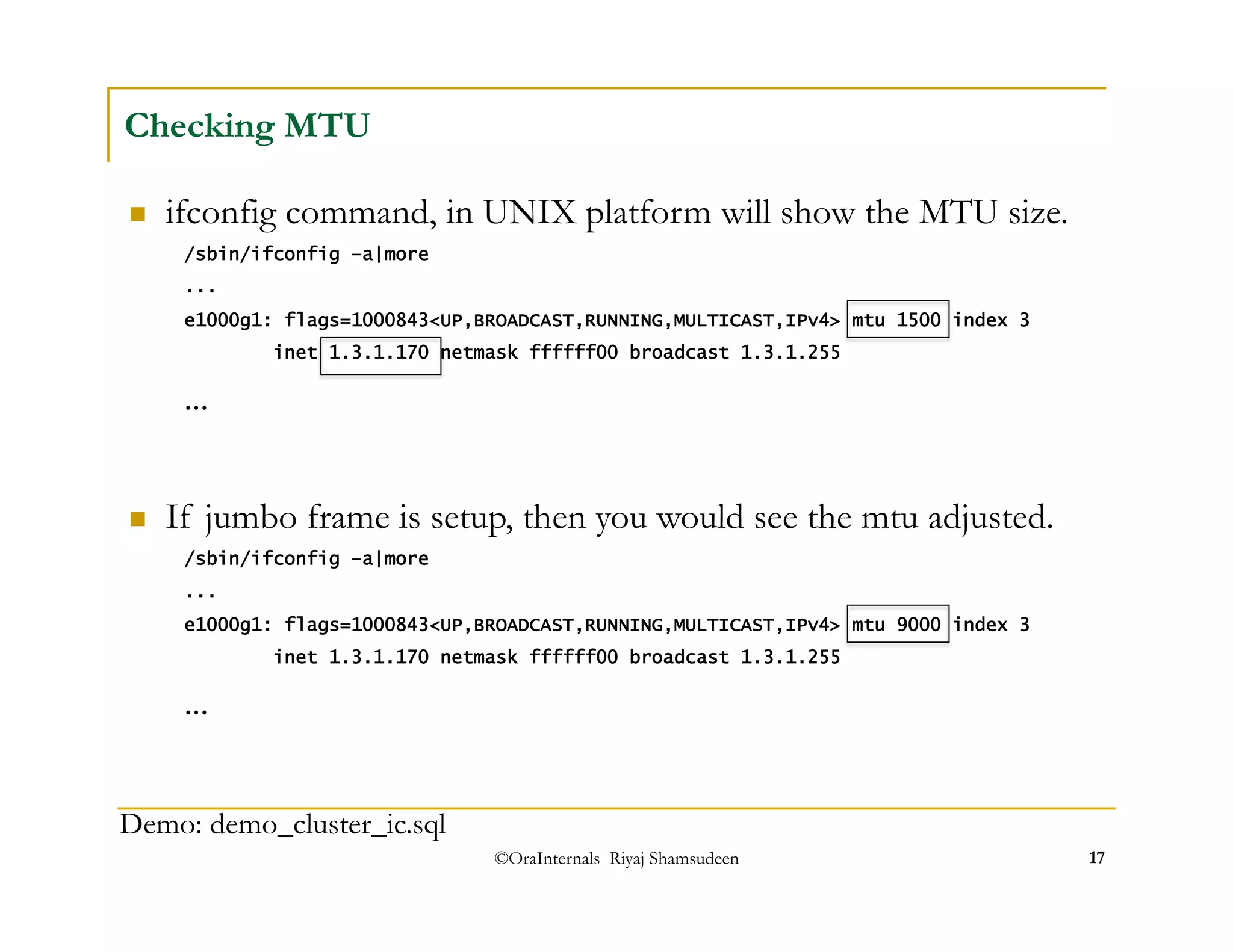
![LMSx
Socket layer
protocol layer
(UDP)
Socket
queues
IP queue IP queue
©OraInternals Riyaj Shamsudeen 18
Network layers
User Process
Socket layer
protocol layer
(UDP)
Interface layer
switch
Interface layer
user
Partial Source: [Richard Stevens]
Udp_xmit_hiwat
Udp_recv_hiwat
Udp_max_buf
Net.core.rmem_max
Fragmentation and
Assembly
MTU
kernel](https://image.slidesharecdn.com/artnetwork-141006153830-conversion-gate02/75/Advanced-RAC-troubleshooting-Network-18-2048.jpg)

